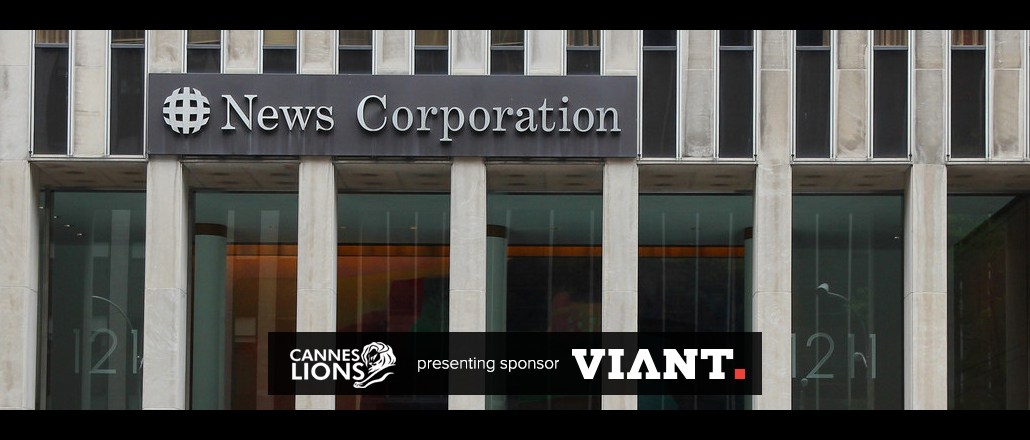Save 50% on a 3-month Digiday+ membership. Ends Dec 12.

Digiday covers the latest from marketing and media at the annual Cannes Lions International Festival of Creativity. More from the series →
A year after Snapchat CEO Evan Spiegel went to Cannes to hype vertical video as the next big thing in video advertising, News Corp is embracing the format.
At this year’s Cannes Lions advertising festival, the media giant launched its first vertical video advertising format. Now, advertisers will be able to buy and place vertical video ads across websites owned by News Corp. The New York Post and The Sun will be the first to offer the format, followed a month later by all other properties in the News Corp umbrella including The Wall Street Journal.
“Ultimately, you have to go where the consumers are and do what they want, and increasingly they prefer vertical video,” said Dominic Carter, chief commercial officer for News UK.
According to Carter, the decision to fully embrace vertical video came out of a survey conducted by Unruly, which found that 53 percent of respondents are annoyed when they have to turn their phone horizontally in order to watch a video. Additionally, 34 percent of respondents said they often lock their phones into vertical mode. This, combined with the fact that News Corp’s audience is increasingly mobile — 80 percent of The Sun’s traffic is coming from mobile devices — made it an easy choice.
News Corp’s vertical format can be bought either directly from a publisher’s sales team or programmatically via Unruly, which was acquired by News Corp in 2015 for $176 million. Ads will be placed in relevant articles on sites, with the video only playing when it’s 50 percent in view and with the sound off, complying with MRC standards.
Advertisers will be able to repackage existing vertical video ads and distribute them across News Corp properties, or work with News Corp to develop custom videos. The Sun, for instance has 40 people staffed across its video and creative departments, which will be available to create these custom units, Carter said.
For its part, Unruly has also launched a new division called the Vertical Video Collective, comprising different video makers and production companies that have experience in producing for the vertical format. The Collective will be available to News Corp ad clients interested in the ad format.
On the back of Snapchat, vertical video is becoming increasingly popular for publishers and advertisers looking to reach mobile users. While it’s not a completely new move for News Corp — The Wall Street Journal has been a Snapchat Discover publisher since January — the format has been adopted by competitors like The Washington Post and Hearst.
So far, The Sun is only working with one advertiser — the U.K. supermarket chain Morrisons — on a vertical video campaign. But as vertical video gains in popularity, it expects that to change rather quickly.
“Advertisers want impact,” said Carter. “Vertical is a much better format for that [on mobile] because it’s not as likely to irritate readers.”
More in Media

Digiday+ Research: Publishers’ growing focus on video doesn’t translate to social platforms
Major publishers have made recent investments in vertical video, but that shift is not carrying over to social media platforms.

Technology x humanity: A conversation with Dayforce’s Amy Capellanti-Wolf
Capellanti-Wolf shared insight on everything from navigating AI adoption and combating burnout to rethinking talent strategies.

How The Arena Group is rewriting its commercial playbook for the zero-click era
The company is testing AI-powered content recommendation models to keep readers moving through its network of sites and, in doing so, bump up revenue per session – its core performance metric.





